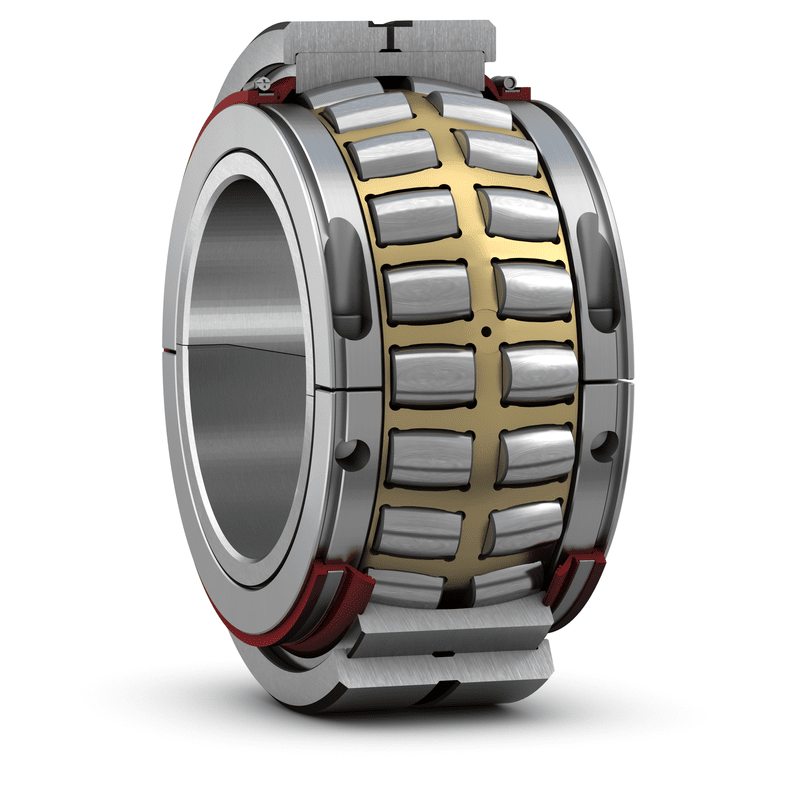Split cylindrical roller bearing is a type of rolling-element bearing that utilizes cylindrical rollers as the rolling elements. They’re designed with an axial split, allowing the inner and outer rings to be separated for easy assembly and disassembly. This split feature makes them ideal for applications where the shaft needs to be inserted into the bearing after the bearing has been installed in its housing.

Roller Bearing Components
Like all roller bearings, split cylindrical roller bearing consists of an inner ring, an outer ring, and cylindrical rollers. The split roller bearings also include cage assemblies that space and guide the rollers. The key difference is that the inner and outer rings are split, which allows them to be assembled around a shaft rather than requiring the shaft to be inserted through a whole bearing.

How Assembly and Disassembly About Roller Bearings Split Cylindrical Type
To assemble a split cylindrical roller bearing, the inner and outer rings are split, separated, and then placed around the shaft. The rings are then joined back together, clamping the bearing onto the shaft. This allows for easy assembly around a shaft that’s already been installed in a housing.
To disassemble the bearing, the inner and outer rings are split apart again by loosening the joining fasteners. This gives access to the cylindrical rollers and cage assemblies so they can be inspected and replaced if needed.
Ideal Applications For Split Cylindrical Roller Bearings
Split cylindrical roller bearings are commonly used in the following applications:
- Assembly around an already-installed shaft: The split bearing design allows it to be fitted onto a shaft after the shaft has been as placed within its housing or assembly.
- Easy disassembly for maintenance: The split inner and outer rings make it simple. So that it may take the bearing apart for inspection, maintenance, or repairs.
- Operation in space-constrained housings: When radial space is as limited but ample axial space exists, a split bearing can take advantage of the additional length.
- Minimal shaft interference: Split bearings introduce less risk of damage to the shaft. It is during assembly compared to non-split bearings that must be pressed onto the shaft.
- Reduced part counts: Since the bearing is as assembled around the shaft, other components like races and press sleeves aren’t needed. Only the split bearing and shaft are as required.
- Wide availability: Split cylindrical roller bearings are offered in a variety of shapes, sizes, and load ratings to accommodate different application needs.
Maybe we could understand common applications for split cylindrical roller bearings as another way:
- Conveying equipment: Split bearings are ideal for conveyor drive systems where belt tensioning requires frequent bearing disassembly and reassembly.
- Materials processing machinery: Vertical and horizontal milling machines, mixers, extruders often utilize split bearings. Actually it is for easy assembly of shafts within housings. Certainly, other processing equipment also realize this.
- Ventilation systems: The fans, blowers and exhaust systems used in ventilation plants. Meanwhile commonly employ split bearings to accommodate the limitations of installed shaft orientations.
- Rolling mills: Split bearings facilitate maintenance and part replacements on the large rotating rolls within rolling mills for metal forming and similar processes.
- Marine applications: Ships and boats use split bearings extensively for their propulsion systems. Then allowing for installation within tight confines and disassembly for servicing.
- Papermaking machinery: Split bearings are common throughout paper plants due to the requirements for easy access. At the same time for frequent bearing changes and long maintenance cycles.

